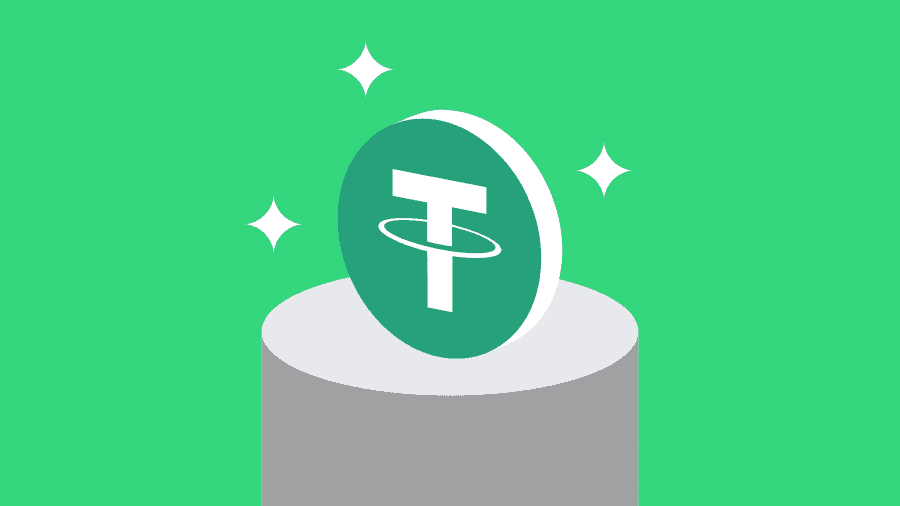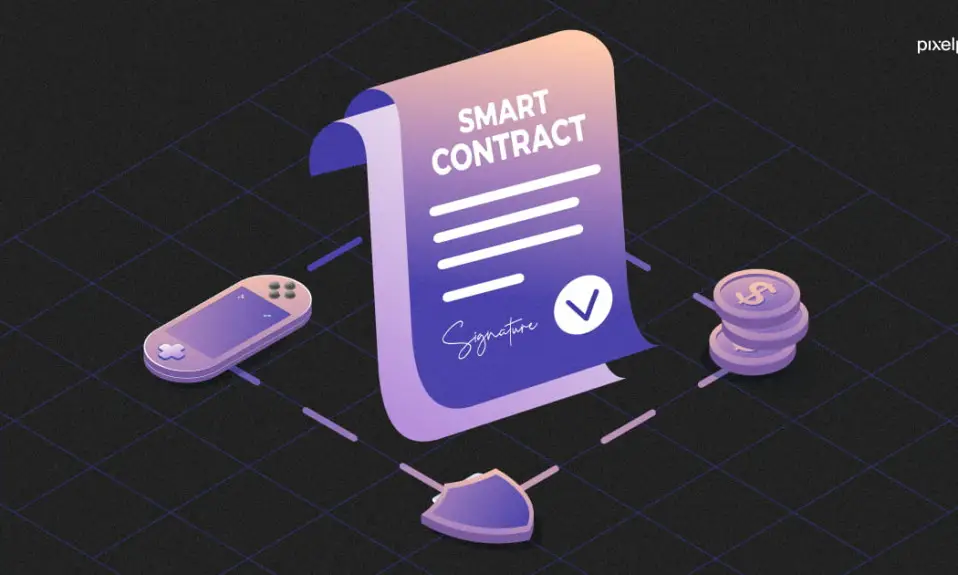When depositing or withdrawing Tether USDT, many traders are confused about which chain to choose between ERC20 vs TRC20. Some traders are familiar with one protocol, but they want to understand the differences between the two token standards to determine whether they should switch from their current network.

Whichever one it is, this article highlights the difference between ERC20 and TRC20 using factors like network compatibility, transaction fees, speed, and wallet address. We also addressed some frequently asked questions, such as ‘How do you determine if your USDT is ERC20 or TRC20?’ So, let’s jump right in!
What Is TRC-20?
![ERC20 Vs TRC20: The Comprehensive Comparison in [currentyear] 2 Trc20 Chain](https://coinwire.com/wp-content/uploads/2024/11/trc20-chain.jpg)
TRC20 is a token standard on the TRON blockchain that allows developers to create and manage digital tokens through smart contracts using the TRON Virtual Machine (TVM). The standard ensures that all TRC20 tokens follow a series of specifications for them to successfully interact with other decentralized applications on TRON.
The TRC20 protocol has multiple tokens, one of which is Tether (USDT) TRC20 or USDT-TRON. Tether released USDT-TRON as a stablecoin on the TRON blockchain, ensuring that all related transactions and addresses function within the TRON network.
The release of TRC20-USDT in 2018 aimed to maintain stability and facilitate smooth communication between Tron protocols and decentralized applications. Major cryptocurrency wallets and exchanges such as Binance, Bitfinex, Bitrue, Ledger Stax, Metamask, KuCoin, WhiteBIT, Trust Wallet, and Poloniex are supporting TRC20-USDT.
Pros
- High transaction speed compared to ERC20. TRC20 completes transactions within 3 minutes.
- Robust security
- High liquidity
- Easily interact with other TRON-based applications
- Lower transaction fees, which are sometimes free
- TRC20 is more scalable. It can handle 2,000 transactions per second.
Cons
- Despite TRC20’s massive growth, the variety of decentralized applications on the TRON network is still not up to that of the Ethereum ecosystem.
- TRC20 tokens operate on the TRON ecosystem, so this might limit their interaction with tokens on other chains.
What Is ERC-20?
![ERC20 Vs TRC20: The Comprehensive Comparison in [currentyear] 3 Erc20 Chain](https://coinwire.com/wp-content/uploads/2024/11/erc20-chain.jpg)
ERC20 stands for Ethereum Request for Comments 20. It is a standard for fungible tokens that defines a set of rules and guidelines that Ethereum-based crypto tokens must follow. Some of these functions include transferring digital assets between addresses, retrieving token balances, and approving token spending on behalf of another address.
This ensures that tokens built on the ERC-20 standard can easily interact with smart contracts, other tokens, crypto exchanges, wallets, and decentralized applications (dApps) within the Ethereum network. ERC20 USDT is a USD-pegged stablecoin based on the Ethereum protocol. So, all wallet addresses and transactions run on the Ethereum network.
Pros
- Good transaction speed.
- Wider reach compared to TRC20.
- ERC20 tokens are supported by more cryptocurrency wallets, exchanges, and decentralized finance (DeFi) platforms than TRC20.
- Robust security.
- High liquidity.
- The developer community is large and active, offering resources, tools, and documentation to assist token creators.
- ERC20 tokens benefit from high liquidity, making them simple to trade on decentralized exchanges.
Cons
- Higher transaction fees, which sometimes fluctuate with network congestion.
- ERC20 completes transactions within 15 minutes, making it 12 minutes slower than TRC20.
- With an increased number of transactions, ERC20 can become slower to execute.
ERC20 vs TRC20: The Main Differences
Tether (USDT) TRC20 and ERC20 represent the same token, but they operate on different blockchain networks—TRON and Ethereum. USDT provides stability in value because they are pegged to a fiat currency, USD. While they have a few similarities, such as the 1:1 ratio they provide in price and value with fiat, here are the key differences between these two tokens issued by Tether.
Token Addresses
Since Tether (USDT) ERC20 is based on the Ethereum network, it uses deposit/withdrawal addresses beginning with “0x” (e.g., 0xf4070a9..). Meanwhile, TRC20 tokens operate on the TRON protocol and use TRON addresses, which start with “T” (e.g., TPfefLHM).
Note: Do not attempt to send TRC20-USDT to an ERC20 wallet address or vice versa because you can lose digital assets, and these transactions are irreversible. So, before confirming any transaction, ensure you have the right network for the particular wallet address.
Transaction Speed
The transaction processing time on the Ethereum network is longer, especially during peak network usage. This is because Ethereum Blockchain can only process a few transactions per second (15 transactions per second, each transaction taking up to 15 minutes).
Meanwhile, the TRON network has faster transaction times due to its higher throughput (processing up to 2,000 transactions per second, each taking 3 minutes to complete), making USDT-TRC-20 transfers quicker.
Transaction Costs
Transactions on the Ethereum blockchain have higher gas fees, which can fluctuate during network congestion, making ERC-20 USDT transfers more expensive. Conversely, USDT transfers are cheaper on the TRON network, and the gas fees are sometimes free.
Network Compatibility
ERC20 has a wider adoption and is more compatible with multiple exchanges, wallets, and decentralized applications than TRC20. Platforms like BNB Chain, Avalanche, and Polygon allow ERC-20 tokens to be transferred to other blockchains.
On the other hand, TRON’s ecosystem is more isolated. It has built-in bridges for cross-chain compatibility with different blockchains, though these are less common than Ethereum bridges. Besides that, many wallets support both token standards.
TRC20 is supported by TRON wallets like TronLink, imToken, and other multi-chain wallets, such as Atomic Wallet, Trust Wallet, and Ledger. Meanwhile, Ethereum wallets like MetaMask, MyEtherWallet, Zego, and Trust Wallet, and hardware wallets like Ledger and Trezor support ERC20 tokens.
![ERC20 Vs TRC20: The Comprehensive Comparison in [currentyear] 4 Wallets Supproted Tron Network](https://coinwire.com/wp-content/uploads/2024/11/wallets-supproted-tron-network-1024x505.jpg)
Blockchain Technology
ERC20 operates on the Ethereum blockchain, the leading blockchain for smart contracts, and DeFi, making ERC20 tokens compatible with various dApps. In contrast, TRC20 operates on the TRON Blockchain network. While it is not as broadly integrated as Ethereum, TRC20 tokens are compatible with dApps, wallets, and exchanges supporting the TRON ecosystem.
Transactions Security
When comparing TRC20 vs ERC20 transaction security, they are designed with robust features that ensure immutability and decentralization. Although ERC20 has a more extensive security history, TRC20 has not faced significant security threats in the past, so both standards are safe and secure.
Additionally, ERC20 tokens and transactions are secured by Ethereum Virtual Machine (EVM), a computing environment on the Ethereum Blockchain that executes smart contracts to ensure network security. Meanwhile, TRC20 transactions are secured by TRON Virtual Machine (TVM), a similar decentralized environment to the EVM but specific to the TRON ecosystem.
Conclusion: Understanding TRC20 Vs ERC20 Easily
As discussed earlier, TRC20 and ERC20 are token standards under different blockchain networks. They are used to create and issue digital tokens that can be transferred and used across decentralized applications on Ethereum and TRON. These token standards are similar in many ways but also have features that differentiate them.
For instance, TRC20 allows traders to buy and sell digital assets faster without incurring high fees. While ERC20 offers better security, more interoperability with dApps, greater liquidity, and even a larger community for support.
The choice is yours. If you prioritize lower transaction fees and want to transact daily, TRC20 is ideal since you will not need to wait long for your transactions to be complete. For traders considering long-term stability, once you get past the high, inconsistent fees, ERC20 will suit you.





 Bitcoin
Bitcoin  Ethereum
Ethereum  Tether
Tether  XRP
XRP  Solana
Solana  USDC
USDC  TRON
TRON  Dogecoin
Dogecoin  Cardano
Cardano